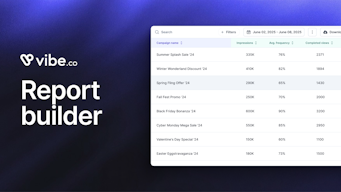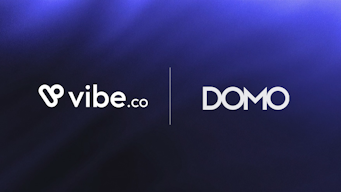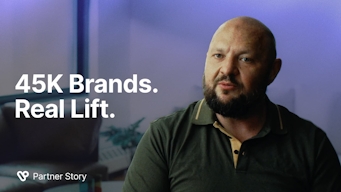What is a CTV DSP and how to choose the best one?
Today, an advertiser’s dream might be to finally catch up to with the ever-increasing list of acronyms ad tech overlords have decided to throw our way, but it’s important to remember a more innocent time in advertising - one when the ultimate dream was to get your ad on that biggest of all screens, that greatest of all entertainers… television!
That’s right, while we would all love to impress tech bros with our understanding of the IAB’s latest programmatic ad transparency protocol, let’s not lose the way to consumers’ hearts: fun, relevant, engaging advertising.
Of course there’s a reason advertisers around the world started shifting their video marketing dollars away from linear television towards digital media: reliable measurement, transparency, scalability, affordability, available inventory, etc. But that was then and this is now. The advent of streamed advertising on OTT and CTV devices finally affords advertisers of all sizes the precision, scale, and pricing of more traditional digital advertising channels like Google Ads or Meta, while leading them back to good old TV commercials - with a twist.
The case for CTV
As of this year, 92% of all US households with a television own at least one streaming device. That’s a whopping 70% jump since 2017, fueled by a global pandemic that forced everyone inside, binge-watching all 7 seasons of Buffy The Vampire Slayer in a weekend (as a random example 🤓). What’s especially interesting to advertisers, however, is that the streamed content trend has only grown since COVID-related restrictions started easing up, contradicting many industry predictions that viewers would return to broadcast and cable once they all started having to get their butts back to the office. In fact, CTV programming officially surpassed cable networks in July of last year, to claim the largest share of U.S. TV viewing, while a recent Leichtman Research Group survey reports that cable providers lost 5.8 million net video subscribers in 2022, up from a loss of 4.7 million in 2021.
This continuing trend matters for two main reasons: one is reach - an ever-expanding viewer base means CTV programming is an increasingly sure way to reach your organization’s specific audience. The second, related reason, is CTV inventory growth. It wouldn’t do advertisers any good to flock to a medium their audiences loved if they only had a small (which means expensive) amount of programming they could advertise next to. Thankfully, CTV inventory has not only grown exponentially in the last few years, it has also sharply pivoted to an AVOD (Ad-supported Video On Demand) and FAST(Free Ad-Supported Television) model, which is why your Apple TV or Roku feed have recently been invaded with alien-sounding acronyms like Fubo, Xumo, Tubi, and other Plutos. These advertiser-friendly services are actually the fastest growing video streamers in the industry, as viewers cut down on premium SVOD (Subscriber-supported Video On Demand) services in favor of more wallet-friendly options (that still allow for the aforementioned Buffy binging).
Meanwhile, under the hood, CTV advertising operates in ways that will feel familiar to any digital marketer - as long as you work with the right partner. With the right streaming TV ad platform, advertisers are able to target, track, measure, and edit their CTV campaigns from a central dashboard, for a fraction of linear television commercial costs. How? Thanks to a magical piece of software called a DSP, which stands for Demand Side Platform. Let’s dive in.
What is a CTV DSP?
DSPs first appeared as a way to facilitate automatic bidding for online ads on the Open Exchange, allowing advertisers to place their content automatically without having to deal with expensive and time-consuming publisher contracts. In essence, that’s still how a CTV DSP operates, except that it places ads in a content stream on your favorite channels instead of on static website banners.
Here’s how it works:
- Upload your content, set targeting parameters, and establish your campaign budget on the DSP dashboard
- The platform then instantly starts searching for publishers within its network to find the inventory that fits advertiser’s needs. (This is important! Find a DSP with a solid channel inventory.)
- The DSP platform itself, without human interaction, makes a bid for an ad placement (again, this is important! Find a DSP with a solid bidder).
- The platform resolves the bid and places an ad if the criteria matches
All of these transactions happen within a millisecond, so your ad can reach the right audience, at the right time, on the right channels, at or below your stated budget. Woah!
In brief, CTV is similar to other digital channels you are probably already familiar with in that it can keep costs low, target high-intent audiences, drive measurable ROAS, and optimize campaign performance in real-time, but it also - and this is the fun part - radically democratizes access to TV advertising for businesses of all sizes.
Unfortunately, a recent IAB report points out the vast discrepancy between Fortune 500 companies gobbling up affordable ad inventory and smaller organizations not yet fully recognizing the CTV opportunity even though digital advertising is diversifying at an exponential rate in the US. Just this year, Google and Meta’s share of digital advertising spend dropped to below 50% in the US for the first time since 2014, with Google capturing 28.8% and Facebook capturing 19.6%. Consumers are spending their time elsewhere, like streaming their favorite shows. CTV is not just a flash in the pan - don’t get left behind!
And hold on to your hat because we’ve only covered half of what a solid DSP can do for you! Once a targeted, tightly budgeted ad has been launched across streaming platforms, good DSPs help advertisers follow their campaign performances and track conversion thanks to pixel tracking or MMP integrations, providing them with hard data and actionable insights to justify their budgets and promote their strategies to stakeholders or clients.
The most pressing matter then becomes: how to confidently enter the wild and wonderful world of CTV advertising? We’re glad you asked, because trust us, not all DSPs are made equal.
How to pick the right DSP for you?
In a nutshell, DSPs allow advertisers to buy tv inventory as easily as they did digital inventory, transparently, and at scale.
Inventory
That last point about scale is especially important if you are considering working directly with streaming platforms to access their inventory, because a private deal will never allow your campaign to scale in the same way that a DSP with access to hundreds of streaming apps and channels ever could. Consider, for example, running a campaign targeting Millennials with a median household income between $50K and $150K in ten specific ZIP codes. A good DSP will offer these targeting options (and many more) right in your dashboard, and will have enough inventory to successfully deliver your ad to enough viewers for your campaign to have an impact. Working with a specific publisher, on the other hand, will limit the amount of households you will have access to and significantly limit your ability to deliver your entire campaign budget. It’s the difference between placing your ad directly on Hulu and delivering it to target households across hundreds of premium streaming channels, at a fraction of the cost.
Strong AI
That’s the first reason to choose working with a DSP over seeking private deals with disparate CTV publishers. The second is increasing competition for premium ad spots. As the CTV advertising landscape becomes increasingly competitive, traditional linear advertisers and broadcasters are flocking to demand-side platforms with mature bidders to target highly localized audiences more effectively. Make sure you select a DSP with a robust bidder (the algorithm which matches demand and offer requests) that have had time to develop their machine-learning enough to optimize your auction win rates and keep your CPMs (Cost Per Thousand Impressions) low. Basically, let the robot do it. 🤖
Excellent UI
Finally, a solid DSP needs to provide its users with an impeccable user experience in order to fully deliver on CTV’s promise of radical transparency. At Vibe.co, for example, we like to think of ourselves as the “Google Ads of CTV,” because the process our clients go through to launch their campaigns is as simple - and familiar - as it is on legacy digital platforms. Just watch our CMO go through the motions in under one minute!
Hopefully we’ve been able to shed some light on the intricacies of CTV advertising and the mechanisms that empower platforms to reach thousands of households daily.


